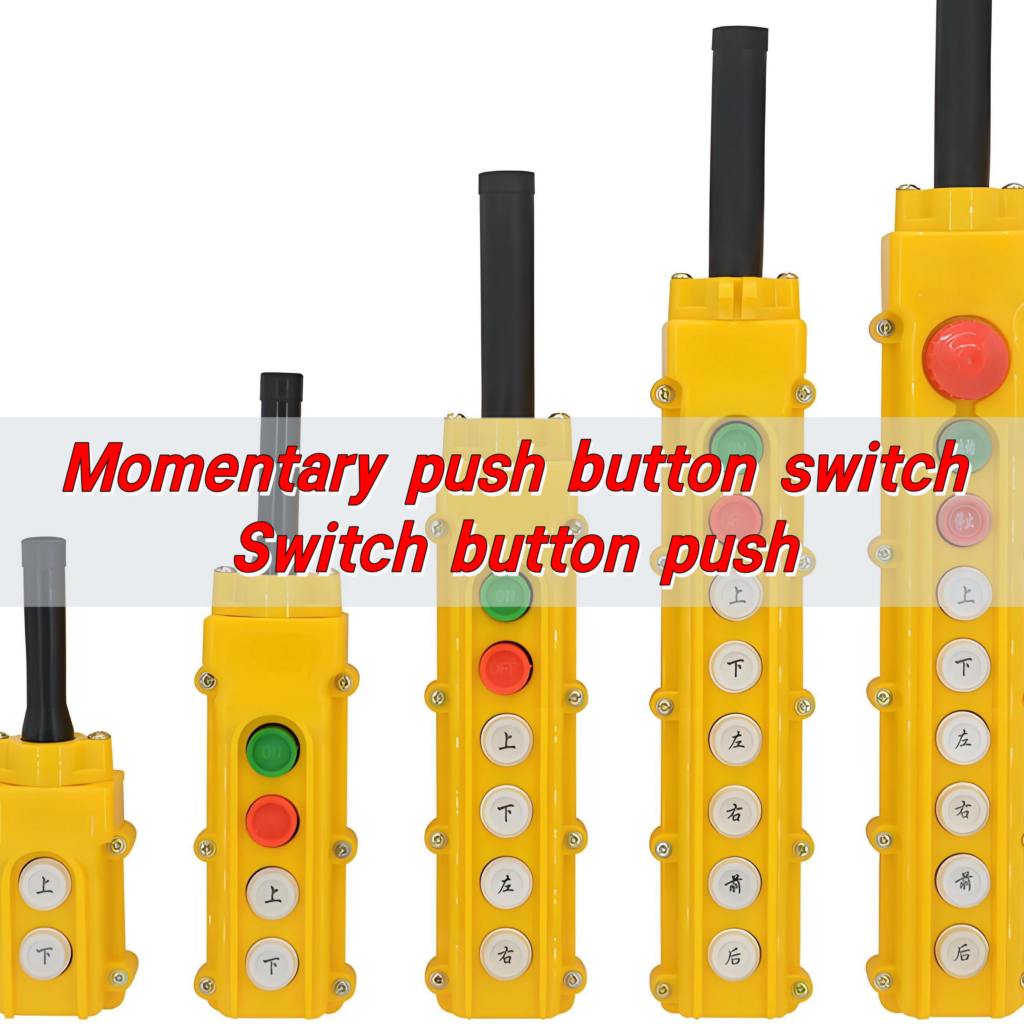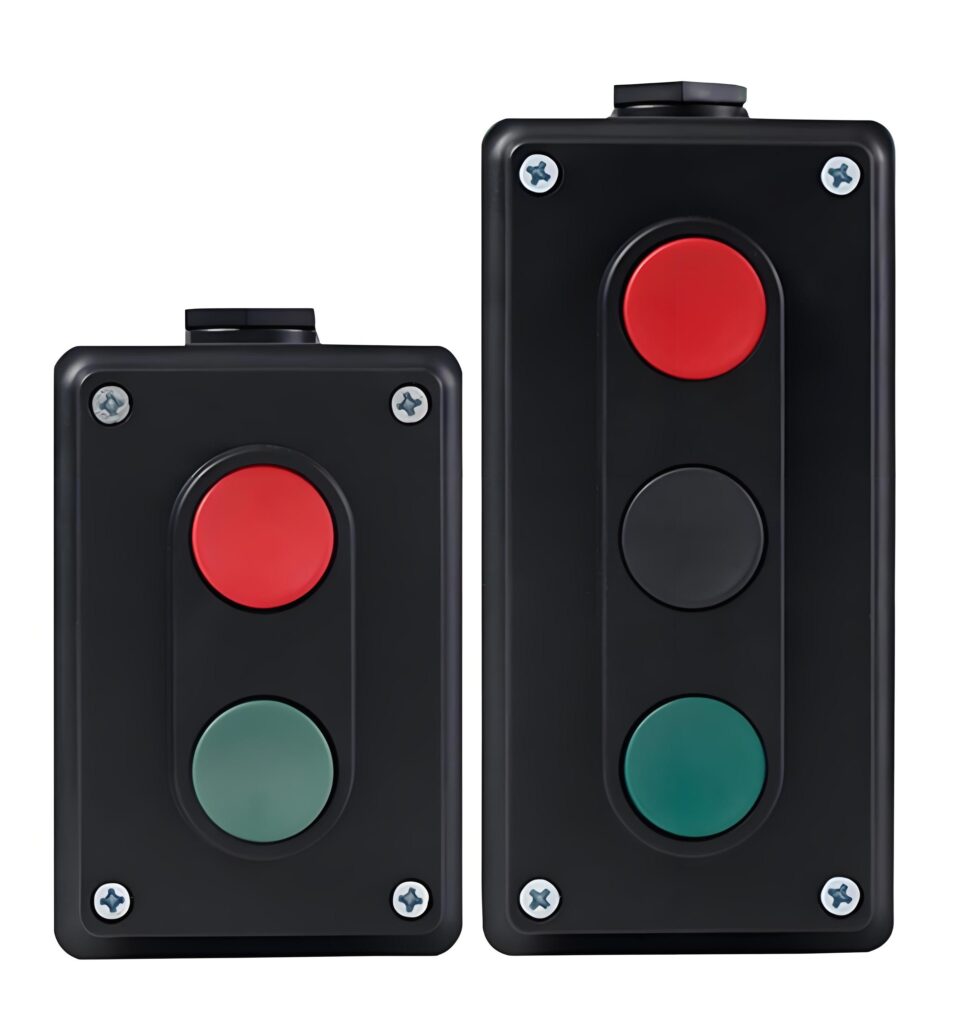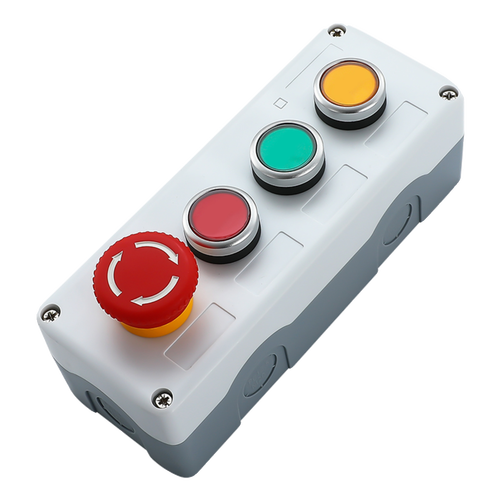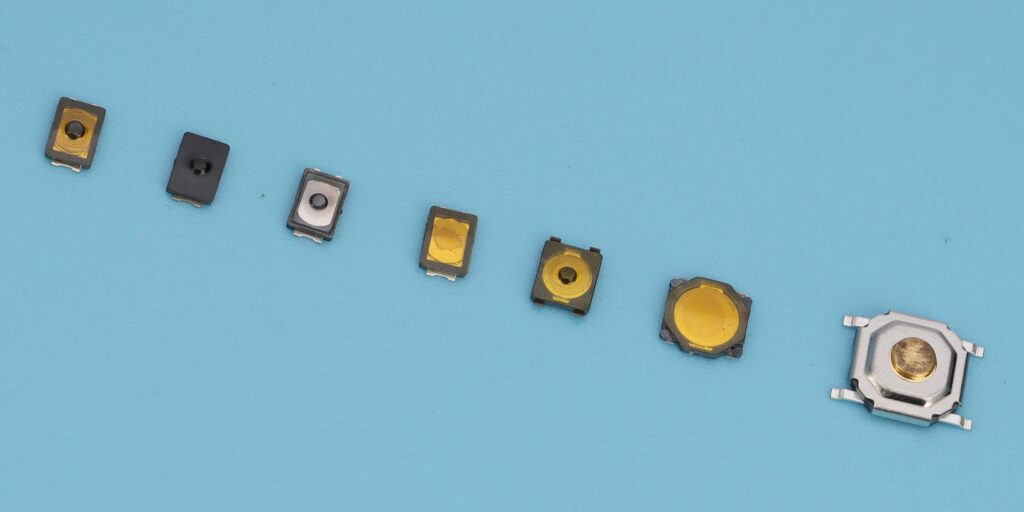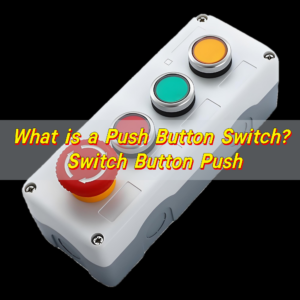What is a switch push button?
Switch push button is a small control device used to start or stop the flow of current in a circuit. When you press it, it sends an immediate signal. Once released, the button usually returns to its original position. The design varies by application, but the principle remains the same. Push to activate. Release to stop.
This action is fast, precise, and intuitive. In modern electronics, the switch button push is used in lighting systems, motors, appliances, medical devices, and more. It simplifies operations. It adds tactile control.
What is the theory of push button switch?
The operating principle of a push button switch is contact control. Inside the switch are electrical contacts and a spring. When you push the button, the internal mechanism compresses the spring and brings the contacts together. This completes the circuit and lets electricity flow.
As soon as you release the pressure, the spring expands and separates the contacts. This breaks the circuit. The process is instant and repeatable.
There are two main contact types in these switches: Normally Open (NO) and Normally Closed (NC). NO contacts stay open until you push the button. NC contacts stay closed until you push it. This allows custom configurations for different systems.
Smart circuits sometimes use additional logic or relays to control what happens after the button is pressed. But the push button itself remains the simplest form of control.
What is the difference between a push button and a toggle button?
The main difference lies in behavior. A push button is momentary—it only stays active while you’re pressing it. Once you let go, it returns to its default state. This makes it useful for actions that need a temporary trigger.
Toggle button changes its state with each press. Push once, and it stays on. Push again, and it turns off. It keeps its last state until it’s manually changed.
Think of a single push button light switch for comparison. When you use a momentary switch, the light stays on only while you’re pushing. With a toggle, it stays on until pushed again.
What are the disadvantages of push button switches?
Though highly efficient, push button switches do have a few limitations.
One is mechanical wear. Constant use over time can degrade cheaper switches. However, quality designs, especially those with metal domes—can last millions of cycles.
Another is unintentional activation. In environments with vibration or moisture, accidental presses can occur. That’s why push button on off switch waterproof models exist. These are sealed and designed for rugged use.
Also, push buttons do not retain state unless paired with external components. But in many cases, this is an advantage. It ensures the system resets after each action.
How to connect push button switch?
Wiring a push button switch on off is straightforward. Most models have two or more terminals. For a basic two-terminal switch, one terminal connects to the power source, and the other connects to the load.
When you press the button, the circuit completes. Current flows from the source to the load. Once released, the circuit opens, stopping the flow.
For more complex switches with four terminals, you’ll find NO and NC terminals. Choose NO for normal off, activated on. Use NC for normal on, deactivated off.
Always check polarity, voltage, and current limits. Correct wiring ensures both safety and performance.
What are the two types of push buttons?
There are two basic types: momentary and latching.
A momentary push button switch is only active while being pressed. The action is brief. This type is best for triggering commands, like starting a motor or ringing a bell. Once you let go, the switch resets.
A latching push button works differently. Push once, and it stays engaged. Push again, and it returns. The state is held until changed manually. This is common in power switches and lighting controls.
In industrial systems, you may find emergency stop buttons that latch mechanically. These ensure the machine stays off until reset.
How does a push button switch work?
Push button switch symbol represents a simple but effective design. The function behind it is mechanical and electrical. When pressed, the switch uses force to bring conductive surfaces together. These contacts allow current to pass through.
The switch’s core includes springs, domes, or mechanical plates. When the pressure is released, these internal elements restore the button to its default position.
Tactile feedback often plays a big role here. Metal dome switches are designed to give a snap-like sensation.
Modern designs are compact and reliable. Many are now push button switch waterproof, allowing outdoor or industrial use. Some are illuminated, adding a visual signal to their action.
The function is direct. Push means “go,” release means “stop.” The system behind it can be as simple as a light or as complex as a control panel.
How does a momentary push button switch function?
The momentary push button switch is unique for its non-latching behavior. You press it—it acts. You release—it stops. It doesn’t hold a state. It doesn’t stay engaged. This makes it perfect for actions that need instant, controlled input.
Common uses include:
- Starting an engine with a push button starter switch
- Resetting a system
- Controlling a motor with a motor switch button push
- Interfacing with a smart home device
What makes this switch type powerful is its safety and simplicity. It naturally returns to off.
Inside, a metal dome or spring mechanism ensures a quick rebound. This rebound is critical. It guarantees fast reset and readiness for the next press.
The action is crisp. The timing is precise. That’s why micro switch push button variations are trusted in sensitive devices like medical tools and control boards.
Conslucion:
The switch button push system is more than a simple control—it’s a powerful, precise, and reliable tool in electronics. At the heart of many systems lies the momentary push button switch, designed for speed, clarity, and immediate feedback.
Its operation is straightforward: push to act, release to stop. Its versatility makes it suitable for lights, motors, smart devices, and safety controls.
Contact us at sales@metal-domes.com for custom solutions, technical support, or to request a free sample.


